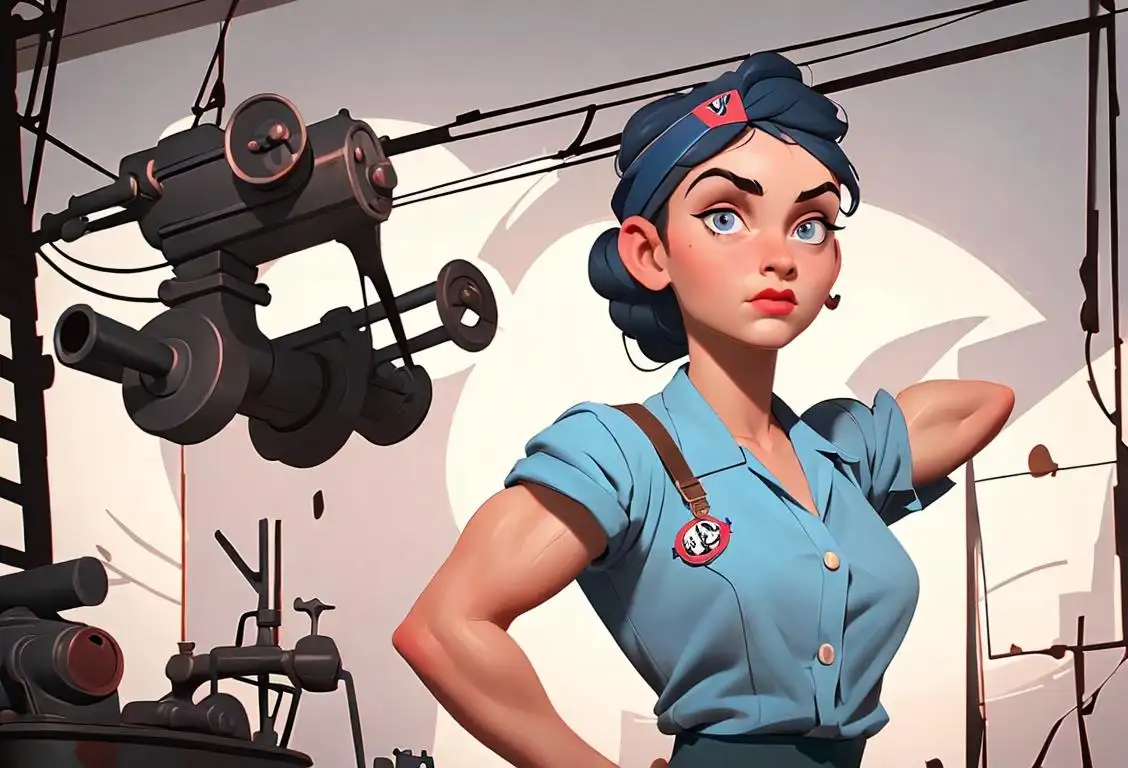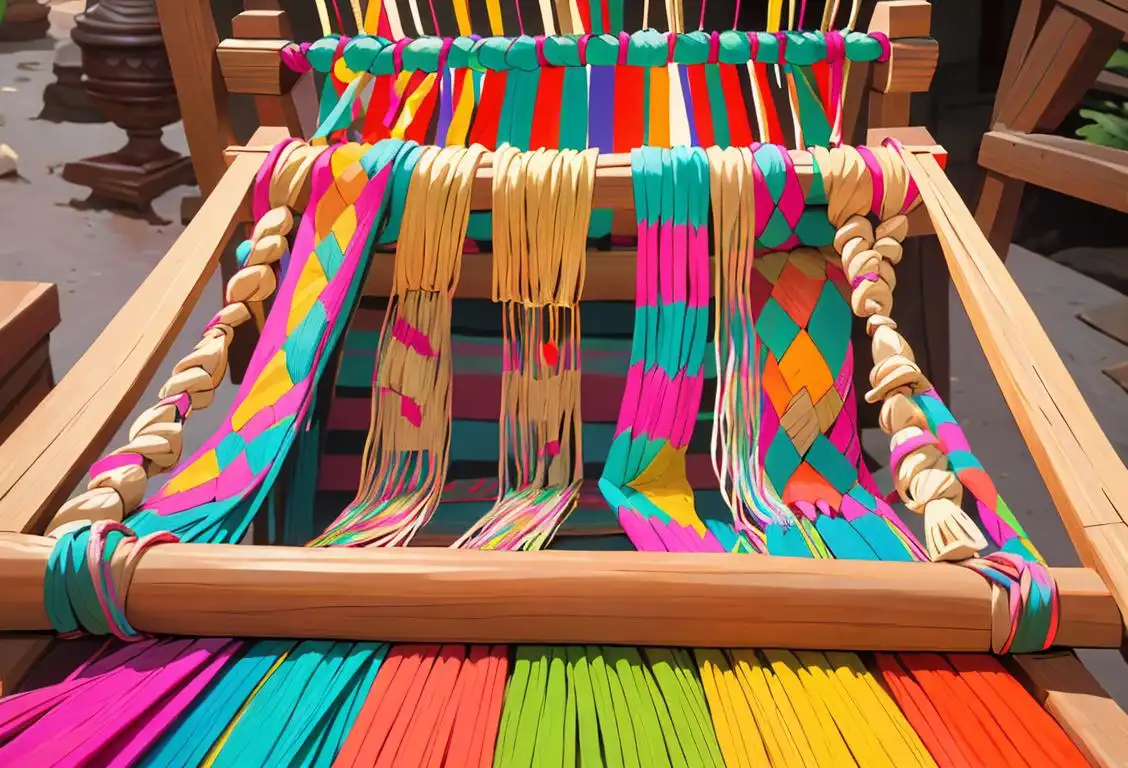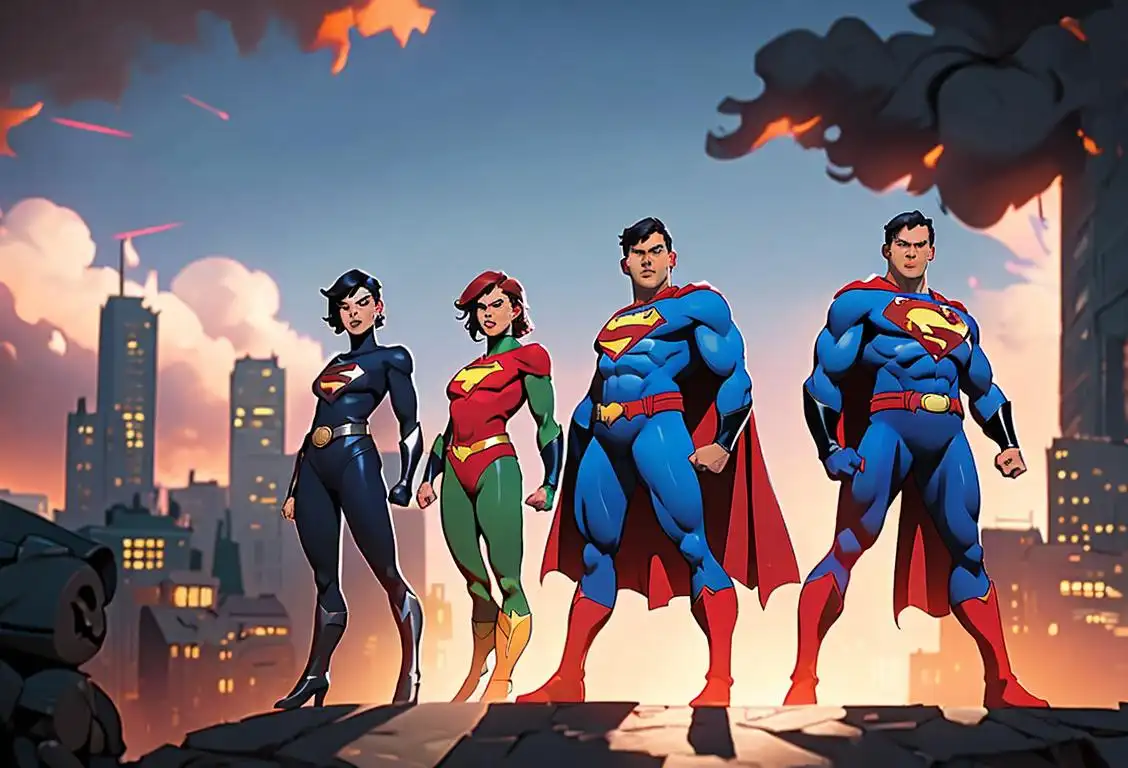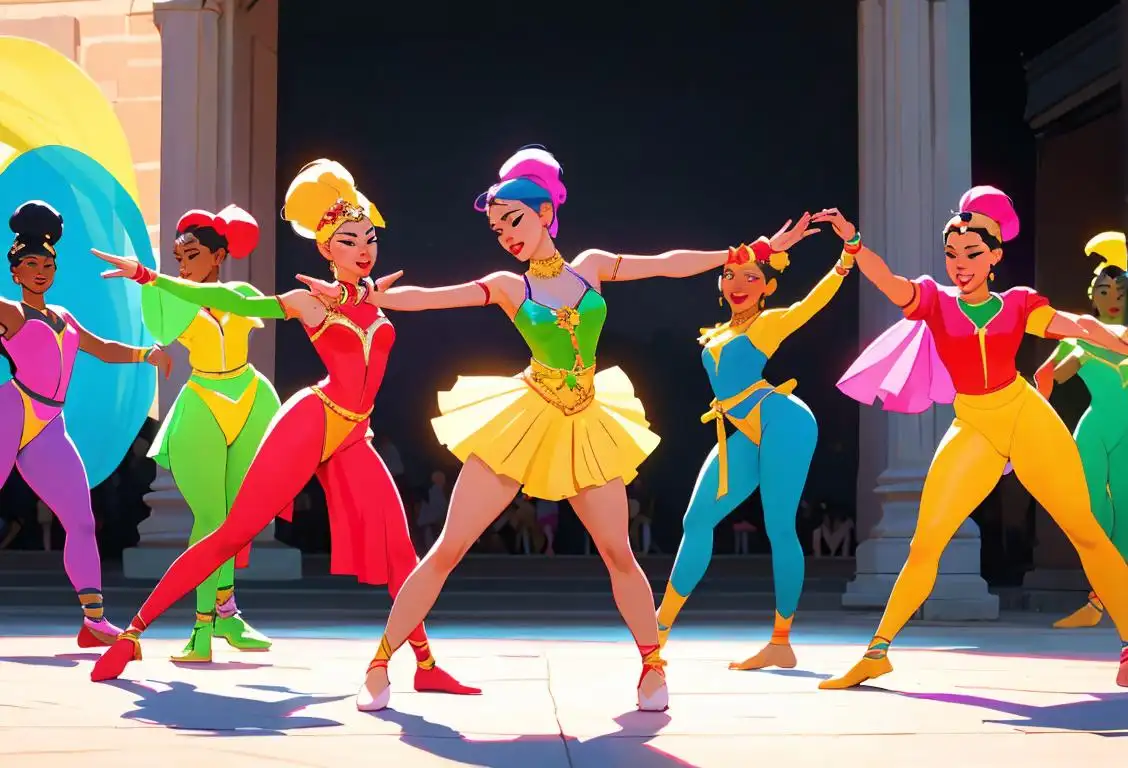National Rosie The Riveter Day

Hey there, history buffs and national day enthusiasts! Get ready to flex your cultural muscles because today we're diving deep into the fascinating world of National Rosie the Riveter Day.
When is Rosie The Riveter Day?
It's national rosie the riveter day on the 21st March.
A Brief History of Rosie the Riveter
March 21st is the day to honor all the Rosies out there who played a crucial role during World War II. But who exactly is Rosie the Riveter, you ask? Well, let me enlighten you.
During the war, millions of men were drafted into military service, leaving behind vacancies in factories and industries. The government needed a way to fill these positions, and that's where our girl Rosie stepped in. She became the symbol of women who took on jobs traditionally held by men, ranging from welding to riveting and everything in between.
Rosie the Riveter, with her iconic red polka-dot headscarf and flexed bicep, became an image of female empowerment and determination. She showed the world that women were more than capable of doing any job thrown their way. This representation was particularly significant as it challenged gender norms and paved the way for the feminist movement in the years to come.
How National Rosie the Riveter Day Came to Be
The celebration of National Rosie the Riveter Day is a relatively recent phenomenon, established by Congress in 2017. The recognition of this day aims to honor the hard work and perseverance of the women who contributed so much to the war effort.
On this day, we commemorate and express our gratitude to these incredible women. We pause to reflect on their unwavering dedication and the lasting impact they had on society. National Rosie the Riveter Day serves as a reminder of the power of unity, strength, and the relentless pursuit of equality.
History behind the term 'Rosie The Riveter'
1942
The Beginning of the Term
In 1942 during World War II, the term 'Rosie the Riveter' was born as a symbol of female workers in the defense industry. The name 'Rosie' was inspired by a popular song of the time called 'Rosie the Riveter' which portrayed a confident and capable female war worker. The term 'riveter' referred to the key role that women played in assembling and riveting airplanes, tanks, and other military equipment to support the war effort.
1942
World War II Begins
In 1942, as World War II began, the United States entered into a period of high demand for industrial labor. With millions of men enlisting in the military, there was a need for women to step into traditionally male-dominated jobs to support the war effort.
1943
Famous Magazine Cover
The term 'Rosie the Riveter' gained widespread recognition when it was featured on the cover of the May 29, 1943 issue of The Saturday Evening Post. The iconic image depicted a strong and determined woman in blue-collar work clothes, flexing her bicep, with the caption 'We Can Do It!' This image, created by artist Norman Rockwell, became one of the most enduring symbols of female empowerment and the contributions of women to the war effort.
1942
Rosie the Riveter Icon Emerges
In the same year, the term 'Rosie the Riveter' first appeared in an article titled 'Rosie the Riveter' in the Saturday Evening Post, written by Norman Rockwell. The article, coupled with Rockwell's iconic illustration of a strong, determined female industrial worker, captured the imagination of the American public and became a symbol of the women who took on factory jobs.
1943
Rosie in Popular Culture
Following the publication of the iconic Saturday Evening Post cover, 'Rosie the Riveter' became a cultural phenomenon. The term and imagery were widely used in various media, including songs, posters, and advertisements, to inspire women to join the workforce and support the war effort. Rosie came to embody the symbol of women breaking barriers and taking on traditionally male-dominated roles in society.
1943
Song Depicts Rosie the Riveter
In 1943, a song titled 'Rosie the Riveter' was released by Redd Evans and John Jacob Loeb. The song, inspired by the cultural phenomenon of women joining the workforce, popularized the term even further. It portrayed Rosie as a patriotic, hardworking woman who was essential to the war effort.
1944
Rosie the Riveter Poster
The iconic 'We Can Do It!' poster featuring Rosie the Riveter was created in 1944 by J. Howard Miller for Westinghouse Electric Corporation. Although the poster was not widely displayed during the war, it resurfaced in popularity in the 1980s and became synonymous with the image of Rosie the Riveter.
1980s
Resurgence and Feminist Symbol
In the 1980s, 'Rosie the Riveter' experienced a resurgence as a feminist symbol. The term was embraced by the women's movement as a representation of female empowerment and the fight for gender equality. Rosie's image was used to advocate for women's rights and highlight the ongoing challenges women faced in the workforce. The iconic 'We Can Do It!' poster was rediscovered and reproduced, further solidifying Rosie's enduring impact on popular culture.
1999
Rosie Enters the National WWII Memorial
In 1999, 'Rosie the Riveter' received official recognition when a bronze statue inspired by the famous 'We Can Do It!' poster was installed at the National World War II Memorial in Washington, D.C. This tangible tribute honored the millions of women who contributed to the war effort and solidified Rosie's place in history as a symbol of female strength and resilience.
1999
Rosie as Symbol of Feminism
In 1999, the U.S. Postal Service issued a stamp featuring the 'We Can Do It!' image of Rosie the Riveter as part of their Celebrate the Century series. This further solidified Rosie's status as a cultural icon and symbol of feminism, representing the strength and capabilities of women in the workforce.
Did you know?
Did you know that the original Rosie the Riveter poster was created by J. Howard Miller in 1942? The poster featured a determined woman flexing her bicep and the catchy slogan 'We Can Do It!' It was designed to boost morale and encourage women to join the workforce during the war.Tagged
awareness funFirst identified
6th March 2017Most mentioned on
21st March 2017Total mentions
687Other days
Nurses Day
Former Prisoner Of War Recognition Day
Press Day
Handloom Day
Heroes Day
Memorial Day
Dance Day
Bestfriends Day
Liberation Day
Love Your Pet Day









